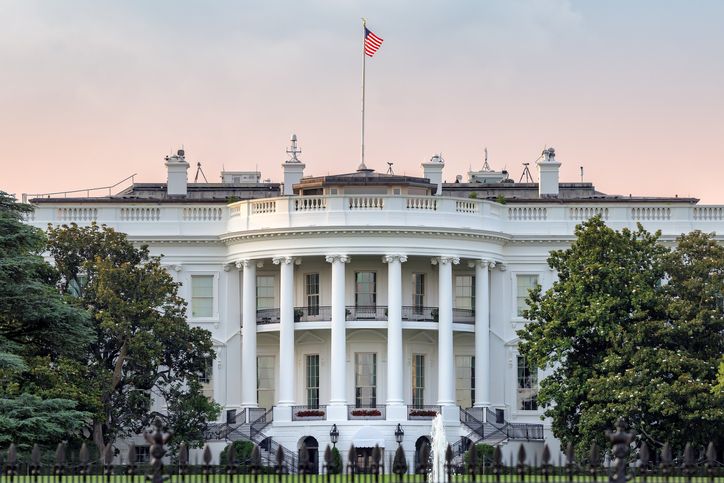The FSA Spy market buzz – 6 June 2025
Animal spirits run wild; Franklin Templeton is taking credit; EM banking revolution; Not all luxury is equal; Death of search and the AI machine; George Soros on wins and much more.

Both funds have a growth bias, but there is a difference in their approach to market capitalisation, according to Poole.
“The Franklin managers can invest in small- and micro-cap stocks, but the Loomis Sayles fund focuses exclusively on large- and giant cap stocks,” he said.
Grant Bower and his team running the Franklin fund look for “quality” companies, with enjoy high barriers to entry, have pricing power and exhibit management strength, noted Poole.
They have tended to favour the consumer discretionary, healthcare, and technology sectors. The fund’s largest exposure is to Amazon at 9.2%.
The strategy follows a bottom-up approach, and aims to find companies demonstrating accelerating growth and increasing profitability that are sustainable over the next three to five years.
The managers sell when fundamentals worsen, valuations reflect the stock’s potential growth, or better opportunities become available.
“There is a very strong growth tilt, and the managers look across the spectrum for opportunities,” he said.
The result is quite a large number of individual holdings (between 60 and 80 stocks), and turnover of 30% to 50% tends to be high.
In contrast, “the Loomis Sayles fund has a more concentrated portfolio of 30 to 40 stocks, and trades infrequently, with turnover of only 13% a year,” said Poole.
The manager, Aziz Hamzaogullari, looks for companies whose business models are hard to replicate and which have wide moats and strong management teams.
“He has a rigorous process, and gets to know the companies and their key staff well. This approach lends itself to conviction and to long-term holdings,” said Poole.
Individual holdings are restricted to 8% of assets each, and Hamzaogullari is keen to diversify the portfolio’s underlying business drivers. E-commerce, enterprise IT spending, and global payments firms have been recent allocations.
Identifying the sustainability of a company’s potential growth is a key aspect of his process given the strategy’s long-term investment horizon. In addition, Hamzaogullari and his team conduct in-depth industry analysis to understand its structural features and competitive environment.
Hamzaogullari aims to buy stocks when their valuation is near the team’s bear case estimate, and he sells once they have reached what they believe is their intrinsic value.
The strategy may allocate up to 20% of assets in non-U.S. stocks. That exposure had historically been around 5%, but increased to 17% by the end of last year.
Fund characteristics
Sector allocation:
| Franklin Templeton | Loomis Sayles | |
| IT | 39.9% | 35.4% |
| Healthcare | 16.8% | 14.8% |
| Consumer discretionary | 14.9% | 18.0% |
| Industrials | 8.9% | 8.9% |
| Communication Services | 6.2% | 13.5% |
| Financials | 5.1% | 3.1% |
| Real estate | 3.4% | – |
| Consumer staples | 2.2% | 5.1% |
| Materials | 1.0% | – |
| Energy | – | 0.6% |
Top 10 holdings:
| Franklin Templeton | weighting | Loomis Sayles | weighting |
| Amazon | 9.2% | Amazon | 7.4% |
| Microsoft | 5.6% | Alibaba | 6.8% |
| Mastercard | 4.2% | 6.3% | |
| Apple | 3.8% | Visa | 6.1% |
| Visa | 3.2% | Nvidia | 5.5% |
| Service Now | 3.0% | Salesforce | 4.7% |
| SBA Communications | 2.8% | Autodesk | 4.5% |
| Costar | 2.4% | Microsoft | 4.4% |
| Alphabet | 2.3% | Oracle | 4.0% |
| Adobe | 2.2% | Deere | 3.6% |
 Investors turn to real estate for alternative income
Investors turn to real estate for alternative income
 Tap into Japan’s post-pandemic growth trends
Tap into Japan’s post-pandemic growth trends
 Turning environmental hopes into investment reality
Turning environmental hopes into investment reality
 Appetite for thematic investments grows amid rates and inflation concerns
Appetite for thematic investments grows amid rates and inflation concerns
 Despite headwinds, ESG continues to perform
Despite headwinds, ESG continues to perform
 Unmasking the dividend opportunity
Unmasking the dividend opportunity
 The future of mobility
The future of mobility
 Investment Ideas for 2021: Explore the untapped potential in China Small Companies
Investment Ideas for 2021: Explore the untapped potential in China Small Companies
 The year of living dangerously for income investors
The year of living dangerously for income investors
 Who’s afraid of higher interest rates?
Who’s afraid of higher interest rates?

Animal spirits run wild; Franklin Templeton is taking credit; EM banking revolution; Not all luxury is equal; Death of search and the AI machine; George Soros on wins and much more.
Part of the Mark Allen Group.
